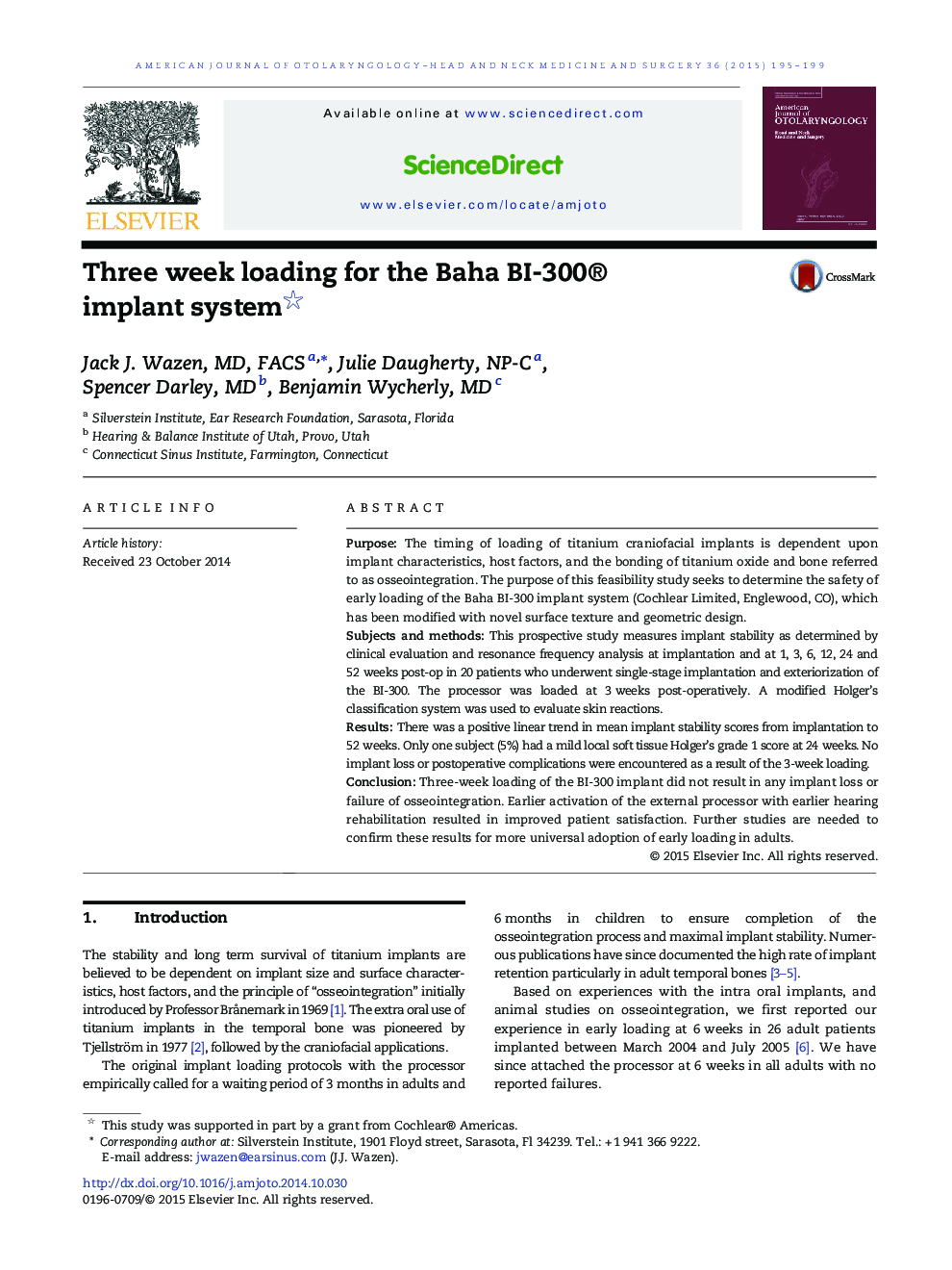| Article ID | Journal | Published Year | Pages | File Type |
|---|---|---|---|---|
| 4103196 | American Journal of Otolaryngology | 2015 | 5 Pages |
PurposeThe timing of loading of titanium craniofacial implants is dependent upon implant characteristics, host factors, and the bonding of titanium oxide and bone referred to as osseointegration. The purpose of this feasibility study seeks to determine the safety of early loading of the Baha BI-300 implant system (Cochlear Limited, Englewood, CO), which has been modified with novel surface texture and geometric design.Subjects and methodsThis prospective study measures implant stability as determined by clinical evaluation and resonance frequency analysis at implantation and at 1, 3, 6, 12, 24 and 52 weeks post-op in 20 patients who underwent single-stage implantation and exteriorization of the BI-300. The processor was loaded at 3 weeks post-operatively. A modified Holger’s classification system was used to evaluate skin reactions.ResultsThere was a positive linear trend in mean implant stability scores from implantation to 52 weeks. Only one subject (5%) had a mild local soft tissue Holger’s grade 1 score at 24 weeks. No implant loss or postoperative complications were encountered as a result of the 3-week loading.ConclusionThree-week loading of the BI-300 implant did not result in any implant loss or failure of osseointegration. Earlier activation of the external processor with earlier hearing rehabilitation resulted in improved patient satisfaction. Further studies are needed to confirm these results for more universal adoption of early loading in adults.
